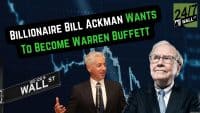There is a new trend that has emerged in this earnings season that will have an impact in 2009 and maybe beyond: a lack of earnings and/or revenue guidance. This unravels roughly 9 years worth of transparency for annual targets set by major companies. Many companies have never offered guidance and there are some benefits in not providing targets. Like it or not, though, investors are probably just going to have to get used to hearing about fewer earnings targets.
First, companies beyond the financial sector are avoiding offering projections. Brokerage firm stocks have never really been big in offering guidance since their business is subject to what happens to the stock, bond, and commodities markets. Banks have not been big in offering formal guidance too far out into the future because it requires them to be comfortable with the performance of their loans and the economy. We now know just how unsuccessful financial institutions are in judging those issues.
But the shock of "no formal guidance" is spreading. In December, it was General Electric (NYSE: GE) which abandoned the practice of offering quarter-to-quarter guidance. This was a marked difference in its prior policy of reiterating guidance, particularly when you consider how many times the firm reiterated guidance in 2005 to 2007.
The spillover has also gone into technology, and the companies which have adopted this are setting the trend that it might now be irresponsible to offer guidance. Intel (NASDAQ: INTC) said it was not going to issue formal guidance, and only provided a one-quarter internal revenue target with expectations for much lower margins. Then a week later, it sent an internal memo to employees warning that it could have its first quarterly loss in two decades.
Microsoft (NASDAQ: MSFT) also lowered guidance, but with no real forward targets. It even noted the lack of transparency in its lower guidance. Advanced Micro Devices (NYSE: AMD) just lowered guidance, but not with any formal targets. eBay (NASDAQ: EBAY) does not even look quite as rigid in its own offering of an outlook for a full year or more. Even chip giant Texas Instruments (NYSE: TXN) only gave earnings and revenue guidance for one quarter and that guidance was a very wide range compared with the past, with annual targets only being forecast for certain expense items and internal operating expectations.
Companies like Apple (NASDAQ: AAPL) have been deemed for years as "overly conservative" and "great managers of expectations" and "setting the bar extremely low" in its guidance practice. But now, many investors do not even listen to what the company says, and that is greatly evident in how Wall Street and Main Street have criticized (justifiably) the disclosure practices over the health of superstar-CEO Steve Jobs. The company did offer quarterly guidance, and Wall Street still took the bait of it being overly conservative. Whether that will continue ahead is an unknown.
There are pros and cons to this practice of dropping formal guidance, even if the investor community wants to know what each company is thinking ahead. Regardless of Regulation F.D., or "REG-FD," not offering guidance does not violate securities laws as long as a company is not withholding material information from investors. Public corporations are required to inform the investment community in a timely fashion when it learns of material business changes. But most of the burden actually falls on the company disclosing this information. Every participant in the investment community finds out this data simultaneously rather than the old days where companies would slip this out to analysts and investment bankers before releasing the data to the public.
The positives are not evident for the public when companies "go dark" with not providing much data on their guidance. But it definitely keeps a company from being boxed in and having to live up to certain targets. This now means that a company might not lose 30% when they are 2% short of revenue or earnings targets.
The negatives are also evident. Analyst expectations start to fluctuate much more widely. This could create a more common scenario where investors are told that a company is a screaming buy by one firm but a screaming sell by another firm. That already occurs, but it could become commonplace.
What the likely outcome will be be is more uncertainty, and more confusion on interpreting data. Analysts used to not get the forward guidance for a year or more. The practice of firms giving formal targets eased much of burden on research firms. The investment community won’t like this lack of transparency. Corporate officers are going to now be able to spend more time running their businesses in difficult times rather than having to spend 20% of their time speaking with the investment community. This practice of no guidance or less and less formal guidance is a trend we are just going to have to get used to. At least until the recession is over.
Jon C. Ogg
January 27, 2009
100 Million Americans Are Missing This Crucial Retirement Tool
The thought of burdening your family with a financial disaster is most Americans’ nightmare. However, recent studies show that over 100 million Americans still don’t have proper life insurance in the event they pass away.
Life insurance can bring peace of mind – ensuring your loved ones are safeguarded against unforeseen expenses and debts. With premiums often lower than expected and a variety of plans tailored to different life stages and health conditions, securing a policy is more accessible than ever.
A quick, no-obligation quote can provide valuable insight into what’s available and what might best suit your family’s needs. Life insurance is a simple step you can take today to help secure peace of mind for your loved ones tomorrow.
Click here to learn how to get a quote in just a few minutes.
Thank you for reading! Have some feedback for us?
Contact the 24/7 Wall St. editorial team.





